

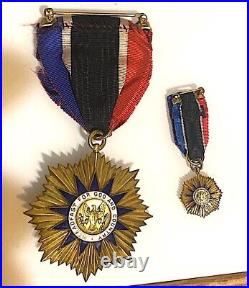
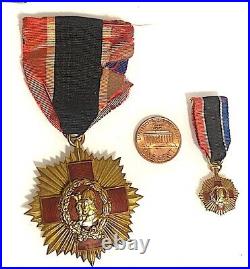
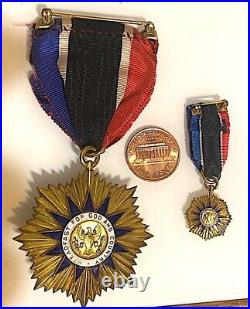
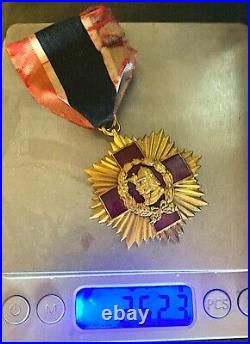
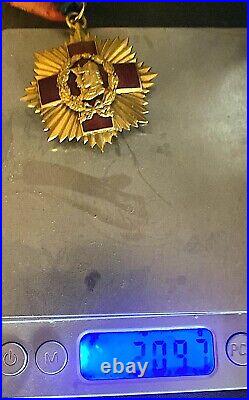

2- 14K GOLD USA SOCIETY BADGE MEDALS FOR FOUNDERS & PATRIOTS OF AMERICA RR!


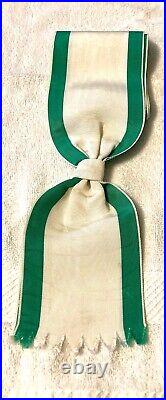

New old stock Grand Cross Sash for the Saxon Order of Civil Merit. The sash is complete and measures 97mm wide. The length (folder for wearing) is 41. I have had the sash for many years. I have ribbon stock of over 2560 countries Send me your want list.




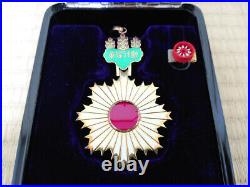


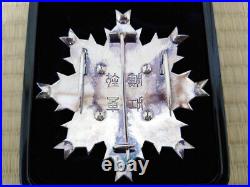


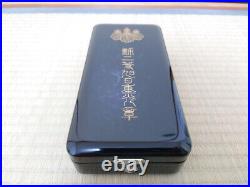
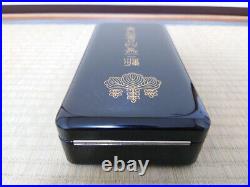

The Order of the Rising Sun, Gold and Silver Star 2nd class. Of the former Japanese army. It’s from war time. There are scratches and dirt due to age. Check out the photos. How about military collector? International Buyers – Please Note.




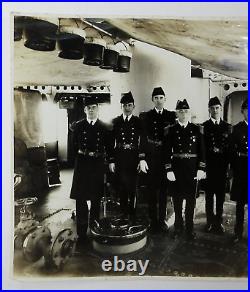
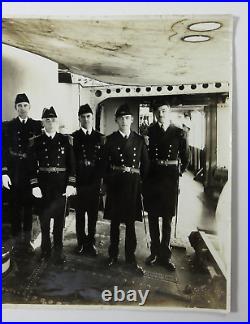
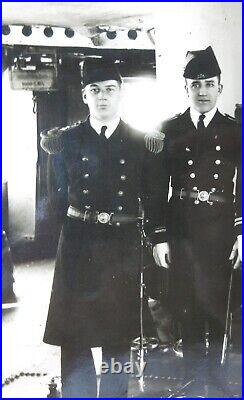
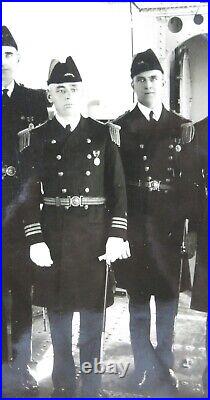
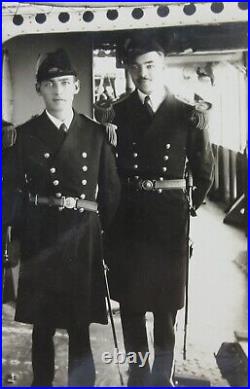
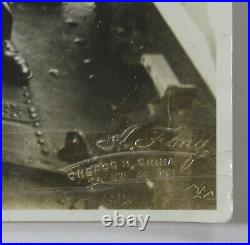


Estate sale find, vintage original US Navy China Service Destroyer USS Rizal Officers photo, circa 1920s. Photo is embossed in lower right corner with A. Fong Chefoo, North China. USS Rizal (DD–174) was a Wickes-class destroyer in the United States Navy following World War I. She was named for José Rizal, a Filipino patriot, and the National Hero of the Philippines. Joining the Pacific Fleet upon commissioning, Rizal cruised along the United States west coast into 1920 on exercises and training duty. Subsequently modified for service as a light minelayer, she was classified DM-14 on 17 July 1920. Rizal departed San Diego on 25 March 1920 for the Far East. With Filipinos constituting the majority of her crew, Rizal remained on the Asiatic Station for ten years. She spent long months anchored in Chinese ports during the spring, summer, and autumn months. Her most frequent ports of call were Shanghai, Chefoo, Chinwangtao, and Hong Kong. Rizal cruised eastward to Apra Harbor, Guam, during November 1928, and visited Yokohama, Japan, from 11 to 20 April 1929. Rizal spent each winter generally from November through March, anchored in Manila Bay. She was docked annually at Olongapo and upon resuming active service each spring operated in Philippine waters. Ordered home late in 1930, Rizal departed Manila on 11 December 1930 for Guam, Honolulu, and San Diego. She decommissioned on 20 August 1931 at San Diego and was towed northward to Mare Island on 31 August 1931 by the minesweeper USS Tern to be placed in reserve. PLEASE SEE DESCRIPTION AND PHOTOS FOR ADDITIONAL DETAILS – The item appears to be in overall Fair to Good Minus used condition, signs of wear, creases, fading, tears, chipping, sunning and age toning, soiling, stains, writing, no odors, please see images.


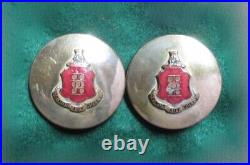
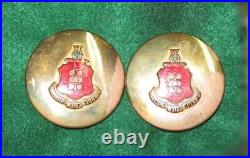
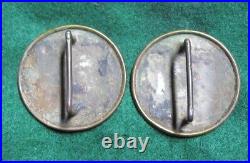
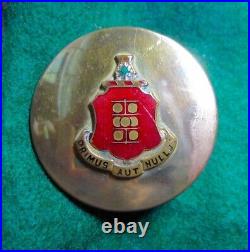
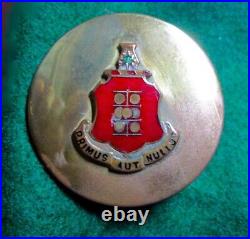

1st Field Artillery Bridle Rosettes – DUIs. These are a scarce pair of horse bridle rosettes used by the 1st U. Field Artillery from 1923 into the 1930s (before mechanization). The distinctive insignia, designed to be worn on the uniform were used here on these brass rosettes. Scarlet is the color of the artillery branch, and the symbolism used here is the grape shot canister in center, for a remark attributed to General Zachary Taylor during the Mexican War, A little more grape, Captain Bragg. The tower on the top center represents the defense of Fort Sumter at the beginning of the Civil War, and a maple leaf commemorates the regiments engagements in Canada during the War of 1812. Overall the polished brass rosettes are 51mm diameter, and have heavy brass wires attached on the back for fastening to the leather bridle straps. There is some patina on both, and traces of brass cleaner residue in protected areas.


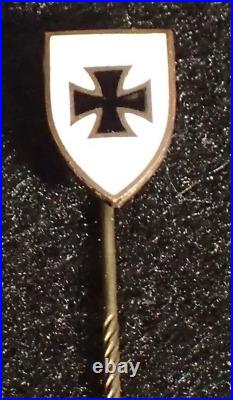

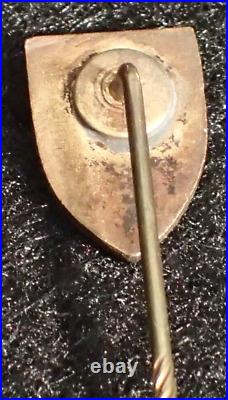

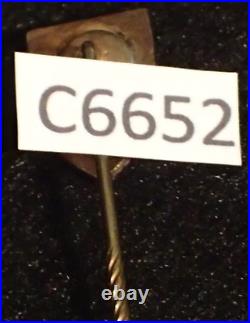

WWI Imperial German Iron Cross Veteran’s Badge Templar Lapel Stick Pin – 1920’s. WWI Imperial German Iron Cross Veteran’s Badge Templar Lapel Stick Pin – 1920’s, Good. Condition as Photographed with some light wear as seen – A Good Period Stick Pin with Spiral Shaft. Recent Estate Acquisition & Presented as Acquired, Scarce. Check back often – we search estates and sources across the world to bring a fine selection of militaria. Please review all photos for details regarding the condition of the item listed – further condition information will be included in the listing as is relevant, if you need additional photographs or have questions regarding the condition please do not hesitate to ask. I describe all items to the best of my ability – please do not hesitate to ask any and all questions prior to the close of the listing. Mistakes very rarely occur – however if one does please rest assured that it will be corrected. International Buyers are Welcome!








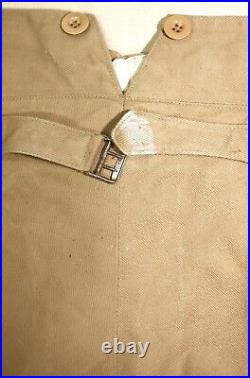






French Army Colonial Officer 1920s/30s Riding Buckle Back Beige Cotton Jodhpur Style Pants. White cotton canvas lining. 1 piped back pocket. 6 fly bakelite buttons. 6 bakelite suspenders buttons. Stain on back strap see photo 7. Stains on both legs front & back see 5 last photos. Waist size : 49 cm / 19,29. Inseam : 65 cm / 25,59. Total length : 98 cm / 38,58. Lower leg : 11 cm / 4,33. Calf width: 17 cm / 6,69. For more information, you can contact me. I answer all questions and I can send photos. Such actions are against the international laws.


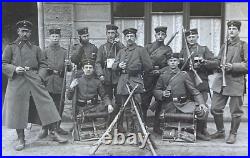
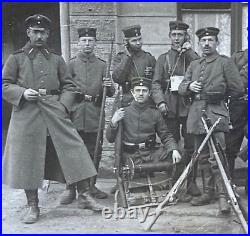
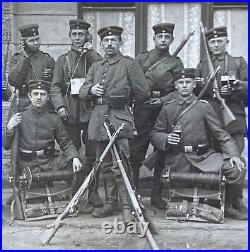
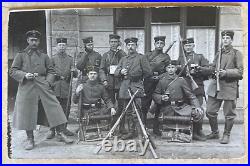
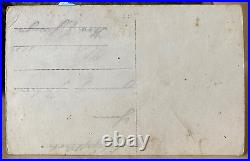
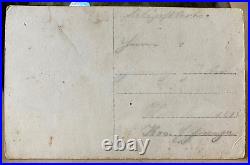

POST-WW1 GERMAN KAPP PUTSCH FREIKORPS TELEPHONES BERLIN 1920 PHOTO POSTCARD RPPC. POST-WW1 GERMAN KAPP PUTSCH FREIKORPS w/ TELEPHONES BERLIN 1920 PHOTO POSTCARD RPPC. ARMED POST-WW1 GERMAN KAPP PUTSCH FREIKORPS MEMBERS OF THE MARINE BRIGADE EHRHARDT ARE SEEN WITH TELEPHONE CABLE LAYER BACKPACKS, TELEPHONE HANDSETS AND A CABLE WIRE POLE HAND TOOL ON THE STREETS OF BERLIN DURING THE KAPP-PUTSCH in BERLIN MARCH 1919. PARTIAL TRANSLATED PERIOD HAND ID’D ON THE REVERSE IN OLD GERMAN SCRIPT. – – isangn. Was an attempted coup against the German national government in Berlin on 13 March 1920 that lasted 5 days. Also known as the. Was a Freikorps unit of the early Weimar Republic. It was formed on 17 February 1919 as the Second Marine Brigade from sailors (Matrosen) of the former Imperial German Navy under the leadership of Hermann Ehrhardt. The Brigade was used primarily in the suppression of the Bavarian Soviet Republic and the First Silesian Uprising, both in the first half of 1919. In March 1920, faced with its imminent disbanding by orders of the government in Berlin, the Marine Brigade was one of the main supporters of the Kapp Putsch that tried to overthrow the Weimar Republic. VERY SHARP FOCUS WITH VERY GOOD CONTRAST. THIS IS NOT A REPRODUCTION OR A COPY.


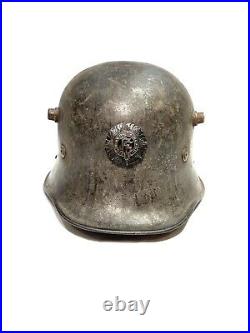
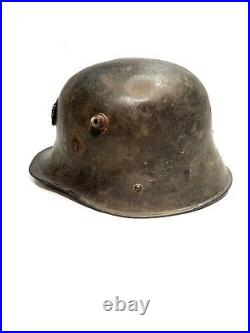
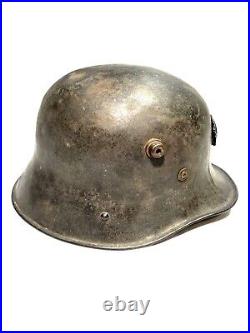
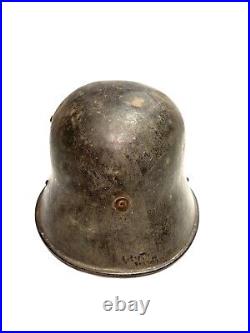
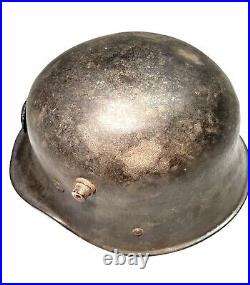
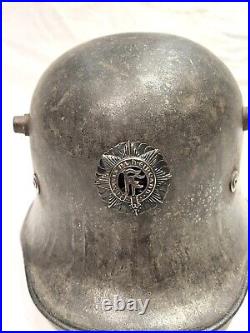
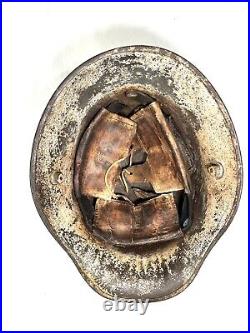
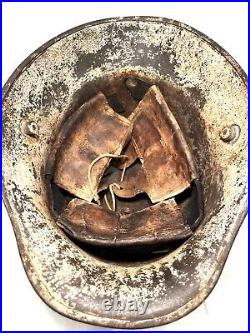
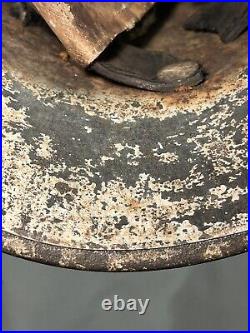

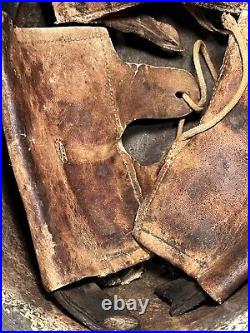

Rare Irish Free State Vickers M27 Helmet with Liner for sale. A copy of the WW1 M16 German Stalhelm design, the Vickers company was contracted by the Irish army to manufacture these helmets and only produced 10,021 of them. The helmet comes with a complete liner, reproduction chin strap (not pictured) and copy helmet badge. It appears that at one time the helmet was painted white and has been stripped. The white paint can still be seen on the underside. The Vickers markings can be made out on the rear skirt of the helmet but are very difficult to read as they have been painted over. The helmet is overall in great shape, although as mentioned has had it’s white paint stripped. One noteable dent in the shel. The liner is intact but the liner band no longer holds it all together as it once would have. There is a rip in one of the cushioning pads and the insides (a black hair like material) will come out.




































































































